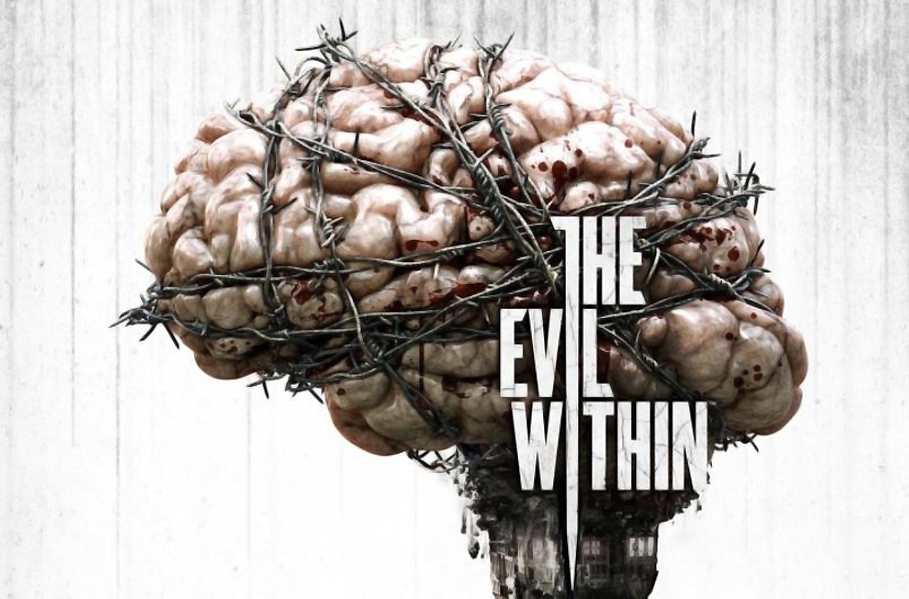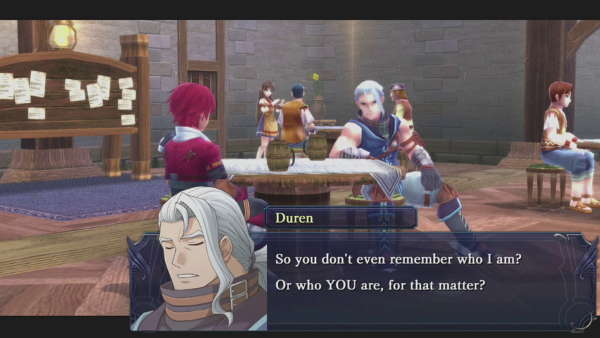Showcasing Shinji Mikami’s return to the genre he helped to define, The Evil Within was playable at EGX 2014, so we decided to take a look. “It’s a hard game,” Bethesda warned us as we picked up our Xbox One controllers, but that only enticed us further.
The demo threw us into Chapter 9 of the game, titled “The Cruellest Intentions.” Our protagonist, Sebastian Castellanos, began the demo on forest path, on a cloudy night. The screen started off in sepia tone with muffled sound as if Sebastian was under some sort of influence, but eventually the natural colours and sound returned and we found ourselves walking toward a huge pair of gates, with a mansion beyond. Very Resident Evil indeed; and it’s to that series which The Evil Within will be compared constantly due to Mikami’s touch.
Upon opening the gates we made our way across a courtyard and entered the mansion, just as two men, one a doctor and the other a patient, walked through a big door filled with cogs which closed behind them. We had to get through this door and freely explored what we could of the mansion to figure out how to open it.
The Evil Within features many traps and other diabolical setups for you to deal with. Fans of survival horror will be pleased to learn that trying to rush blindly into the unknown will get you killed very quickly and graphically. During my playthrough of the demo I encountered a bomb that I could defuse, if only I snuck up to it instead of run. This resulted in the bomb exploding right in front of me, sending parts of Sebastian flying everywhere. Player deaths in the Evil Within look to rekindle the gory flame of the classic Resident Evil games, which fans will be pleased to see.
The Evil Within is also full of strange, scary scenarios. Upon exiting a room after finding one of two key objects (again, classic Resi), the whole screen was taken over by a purple hue, and a new enemy, clad in a hooded top, made their way towards me. I couldn’t escape in time and as soon as it hit me the screen returned to normal and they disappeared, leaving me with very little health left. Very strange indeed, but that’s one of the hooks to The Evil Within – the surreal nature of the horror and gameplay made it all the more interesting.

The Evil Within definitely had the spirit of Resident Evil within.
When it came to combat, traditional shooter controls made shooting the zombie-like enemies very straight-foward. Unlike Leon Kennedy in Resident Evil 4, Sebastian couldn’t suddenly unleash kung-fu kicks, which is more fitting of a survival horror game. It was also easy to get overwhelmed as ammo was very scarce, which is how things should be in a game like this. After each enemy was downed I was prompted to set them on fire to finish the job. It looks like this will be the only way to permanently rid yourself of your enemies, and it could be that even this mechanic has some sort of limiter (e.g. running out of lighter fuel), but there didn’t seem to be any of this in the demo.
A crafting system was also present, as I could find parts and other interesting objects to upgrade weapons, but in the context of the demo there wasn’t much I could do with it. Also of note was the in-game weapon switching. The Evil Within finds a happy medium between pausing to rummage through and inventory screen, and having to put the inventory on hotkeys. When entering into the weapon wheel, time slowed down to a crawl, allowing you to change weapon to anything you like (the crossbow even had multiple ammo types) while also keeping you on your toes about any hazards coming your way with the game is still visibly running in slow-mo in the background.
Further exploring this mansion, I encountered a seemingly innocuous mirror on a wall, and was prompted to hold A to examine it. This whisked me away to a different area entirely. This was a sort of “safe house” similar to the typewriter save rooms in the Resident Evil series, in which Seb could save progress, manage equipment, craft gear and upgrade weapons. This meant that in the full game you could have a very personalised protagonist by the end, which is always a good thing.
The Evil Within is looking like a very promising return to prominence of the survival horror genre, and with Shinji Mikami himself at the helm, there’s everything to play for as The Evil Within’s release date draws closer.





